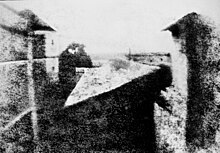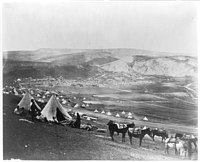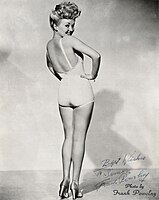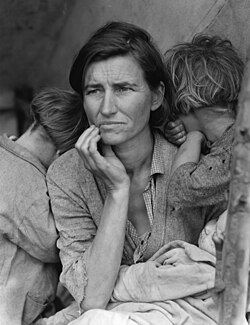100 fotografií, které změnily svět
| 100 fotografií, které změnily svět | |||
|---|---|---|---|
| Autor | Life | ||
| Původní název | 100 Photographs that Changed the World | ||
| Země | Spojené státy americké | ||
| Jazyk | angličtina | ||
| Vydavatel | Time Inc. | ||
| Datum vydání | 1. srpna 2003 | ||
| Předchozí a následující dílo | |||
| |||
| Některá data mohou pocházet z datové položky. | |||


LIFE: 100 fotografií, které změnily svět (anglicky: 100 Photographs that Changed the World) je název fotografické knihy, kterou vydala redakce časopisu Life. Projekt začal otázkou, která byla zveřejněna on-line na internetových stránkách Life The Digital Journalist: „Mohou mít fotografie stejný historický účinek jako literatura?“ Redaktoři posbírali 100 fotografií, které podle nich ztělesňují technologické úspěchy fotografické dokumentace historických událostí a úspěchů, nebo mají ikonický kulturní status nebo symboliku. Knihu vydal Robert Sullivan a nakladatelství Time Inc. Home Entertainment, New York v roce 2003, ISBN 1-931933-84-7.
Obsah knihy
Práce byla rozdělena do čtyř hlavních kapitol se třemi průvodními podkapitolami:
Hlavní části jsou: Umění (soustředí se na fotografický vývoj v celém 19. století a jeho pozdější uplatnění na kulturu); Společnost (obrázky okamžiků, které ovlivnily veřejnost, kterou seznamovaly s politickými, sociálními, kulturními, sociálními a společenskými otázkami); Války (stěžejní okamžiky spojené s konflikty a násilím) a Věda a Technika (zachycuje technologické triumfy, prohry i hrůzy).
Tři podkapitoly nesou názvy: Fotografické umění (rané práce umělců, jejichž hlavním médiem byla fotografie); Fotografická manipulace (nechvalně známé podvody spáchané pomocí fotografií) a Stop akce (fotografie, které jsou de facto převzaty z filmu).
Některé z fotografií se ztotožňují s větší akcí, jako například Wongova fotografie z roku 1937 plačícího osamoceného dítěte na zdemolovaném vlakovém nádraží o „Krvavé sobotě“ během bitvy o Šanghaj jako jeden zástupce bombardování Šanghaje. Další fotografie jsou vyňaty z velkých historických sbírek, jako jsou průlomové snímky Rogera Fentona a Alexandra Gardnera z Krymské války a Americké občanské války. Do sbírky byla zařazena také pohybová vysokorychlostní fotografie Eadwearda Muybridge.
V knize je také dílo z jedné nejslavnější reklamní kampaně Oliviera Toscaniho postavené na fotografii, kterou pořídila Therese Frare. Portrét zachycuje Davida Kirbyho umírajícího na AIDS jak leží na nemocničním lůžku obklopen svými truchlícími příbuznými.[1] Snímek je kontroverzní pro svou určitou podobnost s pietou a také pro použití snímku posledních okamžiků v lidském životě pro reklamu na prodej oblečení, což je vnímáno jako využití lidské oběti. Rodina Kirbyho uvedla, že použití povolila a že kampaň Benettonu pomohla zvýšit povědomí o nemoci AIDS.
Muž před tankem je označení pro protestujícího, který se postavil proti řadě tanků ráno 5. června 1989 poté, co čínské ozbrojené složky násilím potlačily demonstrující lid na náměstí Nebeského klidu. V dubnu 1998 zařadil americký týdeník Time tohoto muže (Unknown Rebel) na seznam 100 nejvlivnějších lidí 20. století. Fotografie cyklicky obíhá médii po celém světě (s výjimkou Číny, kde je zakázána[2]). America Online ji řadí mezi deset nejslavnějších fotografií všech dob. Fotografii tohoto muže pořídilo pět známých profesionálních fotografů z různých tiskových agentur. Charlie Cole, fotograf z časopisu Newsweek získal za svou fotografii cenu World Press Photo.[3]
Poznámky v knize dokumentují pozadí vzniku mnoha fotografií, které byly obviněny, že jsou falešné.
Galerie
- Roger Fenton: Údolí stínu smrti, 1855
- Roger Fenton: Tábor kavalérie poblíž Balaklavy, Krymská válka, 1855
- Ruka s prsteny – jeden z prvních rentgenových snímků Wilhelma Röntgena, pořídil ji 22. prosince 1895 a prezentoval profesoru Ludwigu Zehnderovi z Institutu Fyziky na Freiburské univerzitě 1. ledna 1896
- Východ Země vyfotografoval 24. prosince 1968 William Anders, člen posádky Apolla 8 na oběžné dráze Měsíce
- H. S. Wong: Krvavá sobota zobrazuje plačící čínské dítě v troskách šanghajského Jižního nádraží, dokazující brutalitu Japonců během války v Číně. Snímek byl pořízen několik minut po leteckém útoku, který zasáhl civilisty během bitvy o Šanghaj, 28. srpna 1937.
- Frank Powolny: Pin-up girl herečka Betty Grable v plavkách 1943 byla v podobě plakátů, vytištěna v milionových nákladech, 1943
Odkazy
Reference
V tomto článku byl použit překlad textu z článku 100 Photographs that Changed the World na anglické Wikipedii.
- ↑ Frare Davis Photography | Seattle, WA; (206) 850-9408 | Books. fraredavis.com [online]. [cit. 2020-07-05]. Dostupné v archivu pořízeném dne 2021-01-28.
- ↑ http://www.timesonline.co.uk/tol/news/world/asia/article6390782.ece Archivováno 29. 6. 2011 na Wayback Machine. Identity of Tank Man of Tiananmen Square remains a mystery
- ↑ 1989, Charlie Cole, World Press Photo of the Year [online]. Dostupné online.
Související články
Externí odkazy
Média použitá na této stránce
First successful flight of the Wright Flyer, by the Wright brothers. The machine traveled 120 ft (36.6 m) in 12 seconds at 10:35 a.m. on 17 December 1903 at Kitty Hawk, North Carolina. Orville Wright was at the controls of the machine, lying prone on the lower wing with his hips in the cradle which operated the wing-warping mechanism. Wilbur Wright ran alongside to balance the machine, and just released his hold on the forward upright of the right wing in the photo. The starting rail, the wing-rest, a coil box, and other items needed for flight preparation are visible behind the machine. This was considered "the first sustained and controlled heavier-than-air, powered flight" by the Fédération Aéronautique Internationale.
The Horse in Motion by Eadweard Muybridge. Noted photographer, Eadweard Muybridge was hired, in 1872, by Leland Stanford a railroad baron and future university founder, to find out if there was moment mid-stride where horses had all hooves off the ground.[1] It took several years but Muybridge delivered having captured a horse, named "Sallie Gardner," owned by Stanford; running at a 1:40 gait over the Palo Alto track, on 19th June 1878.[1] Muybridge used a dozen cameras all triggered one after another with a set of strings. [1]
Portrait shows Florence Thompson with several of her children in a photograph known as "Migrant Mother". The Library of Congress caption reads: "Destitute pea pickers in California. Mother of seven children. Age thirty-two. Nipomo, California." In the 1930s, the FSA employed several photographers to document the effects of the Great Depression on the population of America. Many of the photographs can also be seen as propaganda images to support the U.S. government's policy distributing support to the worst affected, poorer areas of the country. Lange's image of a supposed migrant pea picker, Florence Owens Thompson, and her family has become an icon of resilience in the face of adversity. However, it is not universally accepted that Florence Thompson was a migrant pea picker. In the book Photographing Farmworkers in California (Stanford University Press, 2004), author Richard Steven Street asserts that some scholars believe Lange's description of the print was "either vague or demonstrably inaccurate" and that Thompson was not a farmworker, but a Dust Bowl migrant. Nevertheless, if she was a "Dust Bowl migrant", she would have left a farm as most potential Dust Bowl migrants typically did and then began her life as such. Thus any potential inaccuracy is virtually irrelevant. The child to the viewer's right was Thompson's daughter, Katherine (later Katherine McIntosh), 4 years old (Leonard, Tom, "Woman whose plight defined Great Depression warns tragedy will happen again ", article, The Daily Telegraph, December 4, 2008) Lange took this photograph with a Graflex camera on large format (4"x5") negative film.[1]
TITLE: Cavalry camp near Balaklava
CALL NUMBER: PH - Fenton (R.), no. 4x (A size) [P&P]
Restricted access: Materials extremely fragile; Served by appointment only.
REPRODUCTION NUMBER: LC-USZC4-9117 (color film copy transparency) LC-USZ62-34127 (b&w film copy neg.) No known restrictions on publication.
SUMMARY: Military encampment showing conical tents, people, and horses, with mountains in the background.
MEDIUM: 1 photographic print : salted paper ; 28 x 34 cm.
CREATED/PUBLISHED: [1855]
CREATOR: Fenton, Roger, 1819-1869, photographer.
NOTES:
Title transcribed from verso.
Alternate title from: Gernsheim, Roger Fenton, photographer of the Crimean War: His photographs and his letters from the Crimea, with an essay on his life and work.
Purchase; Frances M. Fenton; 1944.
Forms part of: Roger Fenton Crimean War photograph collection.
Roger Fenton, photographer of the Crimean War: His photographs and his letters from the Crimea, with an essay on his life and work / Helmut and Alison Gernsheim. London : Secker & Warburg, 1954, no. 46.
SUBJECTS:
Great Britain. Army. Royal Horse Artillery--Facilities--1850-1860. Crimean War, 1853-1856--Military facilities--British. Military camps--British--Ukraine--Balaklava--1850-1860. Military life--British--Ukraine--Balaklava--1850-1860.
FORMAT:
Salted paper prints 1850-1860.
OTHER TITLE: Encampment of Horse Artillery
PART OF: Fenton, Roger, 1819-1869. Roger Fenton Crimean War photograph collection
REPOSITORY: Library of Congress Prints and Photographs Division Washington, D.C. 20540 USA
DIGITAL ID: (color film copy transparency) cph 3g09117 http://hdl.loc.gov/loc.pnp/cph.3g09117 (b&w film copy neg.) cph 3a34625 http://hdl.loc.gov/loc.pnp/cph.3a34625
CARD #: 2001696366Studio portrait photo of Betty Grable taken for promotional use.
Enhanced version by the Swiss Helmut Gersheim (1913–1995), performed ca. 1952, of Niépce's View from the Window at Le Gras, (Harry Ransom Humanities Research Center, University of Texas, Austin)View from the Window at Le Gras, the first successful permanent photograph created by Nicéphore Niépce in 1827, in Saint-Loup-de-Varennes (Saône-et-Loire, Bourgogne, France). Captured on 20×25 cm oil-treated bitumen. Due to the 8-hour exposure, the buildings are illuminated by the sun from both right and left.
"The valley of the shadow of death" Crimean War photograph. Dirt road in ravine scattered with cannonballs.
This terrified baby was one of the only human beings left alive in Shanghai's South Station after the brutal Japanese bombing in China.
An early X-ray picture (radiograph) by Wilhelm Röntgen (1845–1923) of Albert von Kölliker's left hand (hence the wedding ring).
Fotografie z povrchu Měsíce zdánlivě zapadající Země byla pořízená členem posádky Apolla 8 Billem Andersem 24. prosince 1968.

















